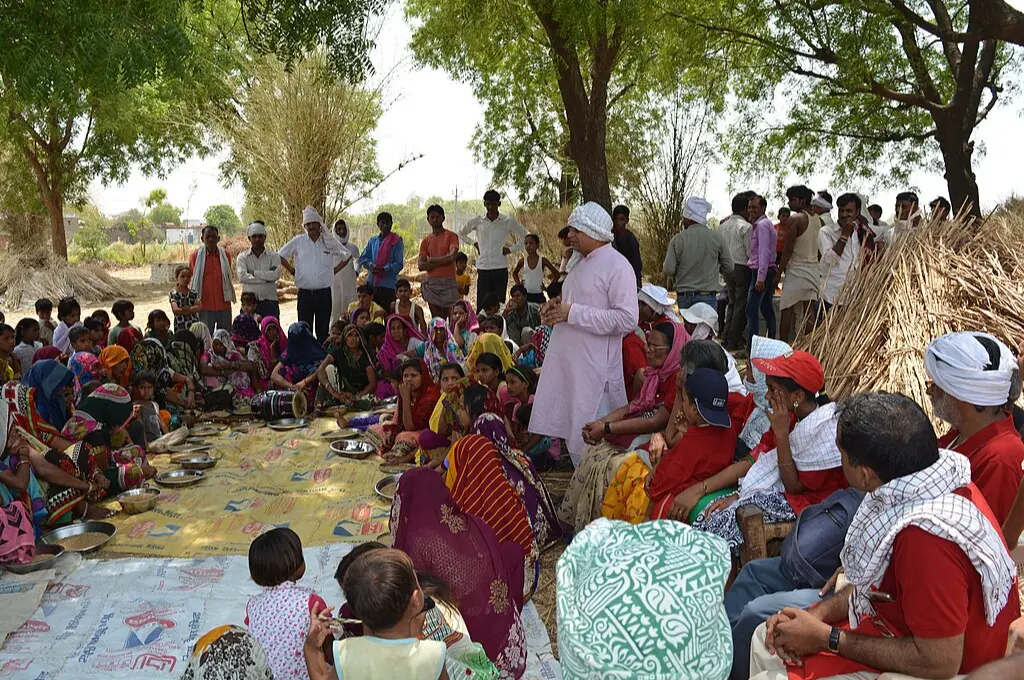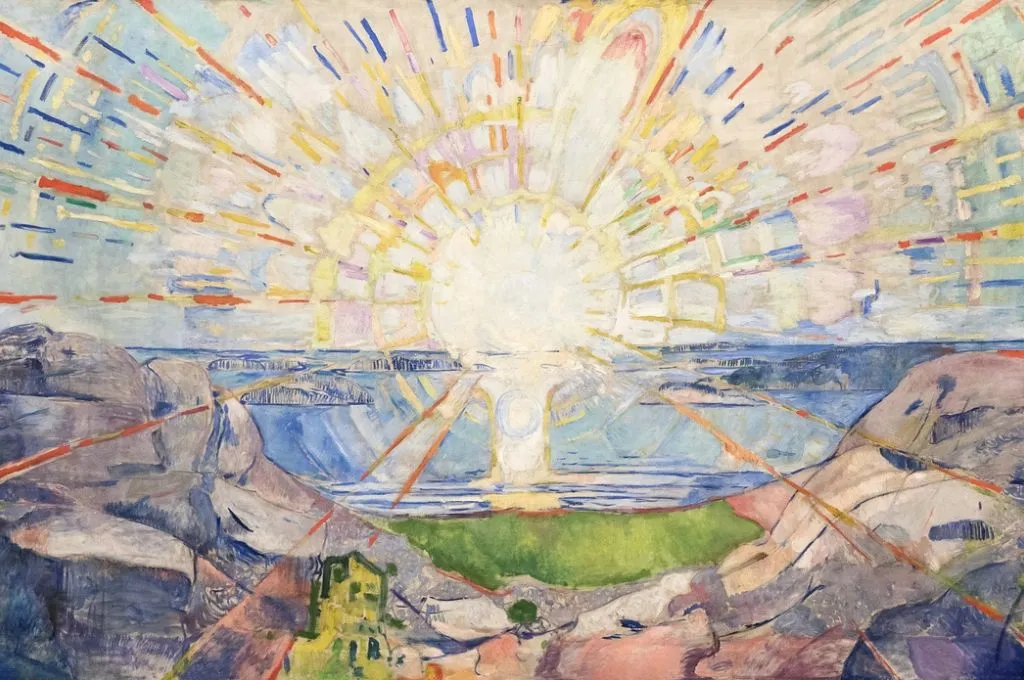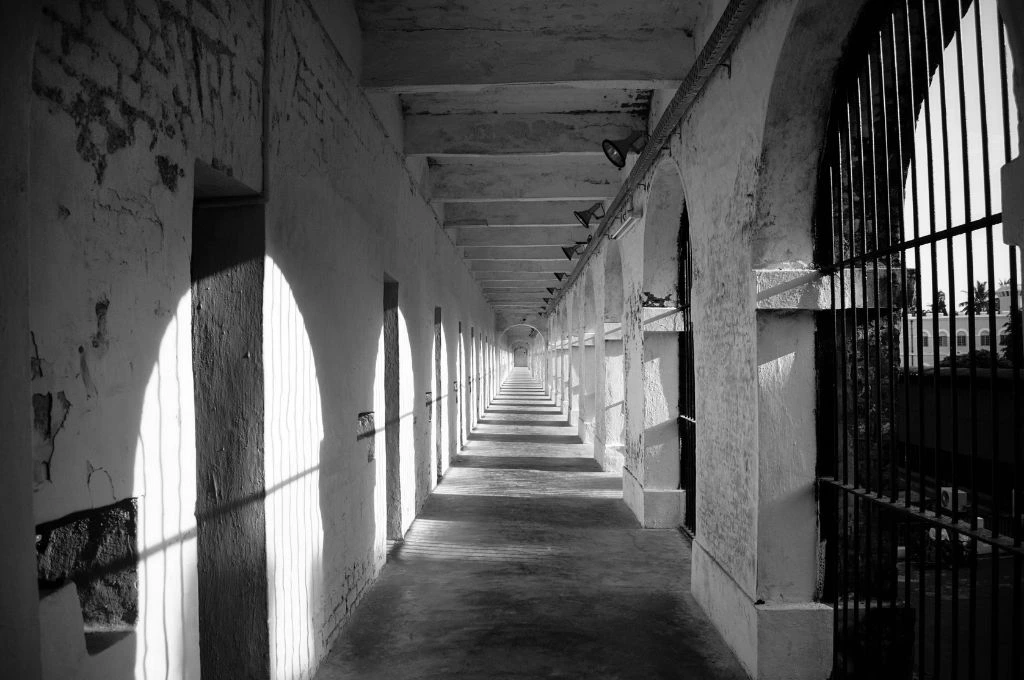Thenmozhi Soundararajan is the founder and executive director of Equality Labs, a Dalit civil rights organisation dedicated to ending caste apartheid, gender-based violence, Islamophobia, white supremacy, and religious intolerance. Her work has been crucial in getting a number of institutions and universities in America to re-evaluate their discrimination policies and include caste as a protected category. Thenmozhi is also the force behind #DalitWomenFight, a community-led digital project to amplify the voices of Dalit women fighting for justice, and the co-founder of Dalit History Month. In her upcoming book The Trauma of Caste, Thenmozhi explores the trauma of Brahmanical social structures for caste-oppressed communities, and what healing and well-being can look like.
In this conversation with IDR, Thenmozhi talks about failure as an opportunity to build power, how systems of oppression affect well-being, and what healing means for individuals and communities. This article is a transcript of a Failure Files podcast episode that was recorded as part of a special series, where we look at the intersection of failure and well-being, in partnership with The Wellbeing Project.
Tanaya: Most conversations around self-care focus on what individuals can do to cope with stress and improve their well-being. But this narrative puts the onus on the individual entirely, and ignores the role of a person’s social, political, and economic context. For instance, research shows that, in India, socio-economically disadvantaged communities, such as Muslims and scheduled castes, have significantly worse mental health outcomes when compared to upper-caste Hindus.
So, then, what does self-care mean for those who are fighting systems of oppression and discrimination, day in and day out? How do they prioritise their own well-being?
Joining me today to talk about all of this and more is transmedia artist and activist Thenmozhi Soundararajan. Thenmozhi, you’ve been at the forefront of movements for caste equity and racial justice both in the US and in India. Could you tell us a bit more about how this journey has been so far?
Thenmozhi: I’ve been an activist for many years, you know; my family was always active related to work around caste abolition. And I think that, you know, when I came into my own in college, I was really shaped by both the battles for racial justice and also my own experience of caste discrimination. And so as well as these issues, kind of facing, myself being a survivor of gender based violence. So I think that, in my time in college, it was really crucial for me to see how all of those threads are really formed and the need for an intersectional approach to caste equity. And a really important case that happened when I was in school was the Lucky Bali Reddy case in California, where a dominant caste landlord trafficked over 300 caste-depressed workers, including 20 young girls, some as young as 11 and 13, to be his sex slaves and to work his buildings in the city. And he’s the second largest landlord there. And so many of his buildings were student housing. And so it was so bizarre to me as a young, you know, as an adult young Dalit woman to know that you could see Dalit children who were working his buildings, instead of being in school, and nobody asked the question, because Dalit women and girls are invisible to almost every society that they’re in. So that really shaped my perspective as an activist and the need for there to be interventions, and also to go beyond the triage experience of structural discrimination, and look consistently at the systems that are failing and the ways that we can come up with systemic interventions.
Tanaya: Thanks, Thenmozhi. You mentioned how your parents were also actively working towards caste abolition, and how you started on this journey a while ago. And this just goes to show that when we’re working on issues of social change, we need to be ready for a long, arduous journey, and not quick turnarounds. Because social change is a slow, gradual process that may take years, even more so when one is trying to dismantle a system of oppression that is centuries old. So what does it take, both mentally and emotionally, to keep going against all odds, and to bring others along too?
Thenmozhi: I think one thing that’s very important is to recognise that you are part of a chain, a lineage of resilience. So it’s never about you at a singular point in time; there are ancestors that have fed you to get to this moment, and there are those that will follow you, for whom you are an ancestor in training. And when you recognise that you’re not the single hand that’s carrying the responsibility for freedom, it basically takes the burden off of you from imagining that you have to win it all right at this moment. And that’s why I always say that we’re fighting to end caste apartheid in our lifetime. And we live our lives as if we see that goalpost. So that means setting targets that are strategic and visionary. That means pushing ourselves to look and examine and unearth all the places that caste exists—in our bodies and our policies and our institutions and our relationships. But also that we need to fundamentally understand that you might sometimes win a battle or lose a battle. But we are really in the process of building leaders who can be autonomous and dream and fight and strategise on themselves in ways that are separate from how Brahmanism trains us to be. Brahmanism tells us that we have to give over our self-determination, the ways we process knowledge. And so to really create leaders that have de-Brahmanised themselves, that in and of itself is a political project. So I always look at every campaign as part of the larger arc of the freedom of our people. And every time you fight, you actually build power. You may not win that particular target, but you build power for the next challenge.
Tanaya: Could you tell us a little bit more about what that’s been like? While your work has been instrumental in bringing about significant change in a relatively short amount of time, it’s not easy. I’m sure you’ve also had to navigate a lot of backlash, setbacks, and failures in your journey.
Thenmozhi: So it’s okay, I think, to have setbacks, because, again, we are building leaders who will then come back stronger, smarter, and refined. But the end, I think, that long-term vision has actually been really useful, because we are one organisation that continuously delivers strategic wins. I won’t say that we win every engagement that we go into, but we have moved the ball very far in terms of caste equity in the diasporic space. Because I can certainly remember when we first started, people did not believe that caste existed at all, and it was very contentious. In the battle around California textbooks, where you had dominant caste forces trying to erase Dalit, not to, you know, teach the issue of caste and, you know, argue that, you know, Hinduism didn’t have patriarchy in it, all of this stuff. I remember talking to one of the board of ed people, and what their response was is that your stories are really compelling, but you don’t have any data. And so that taught me that, as a marginalised community, the way we tell our stories matter to people in power, and though those people of power don’t look at our bodies, don’t look at our spirits, don’t look at our stories, they only look at quantitative data, you know, to make their policy calls. That’s one of the reasons why we started out to do the caste survey. And the caste survey was very challenging, because again, even to conduct the survey, we face discrimination. People hurled caste slurs at us, they targeted us, they told us we were dividing the community, how could we, we were terrible people. There was even a board, an organisation that had to convene its board because they went into existential crisis. And they said if we deliver this survey, we will split our institution. And we had to go and present to the board that you’re not going to do that. Routinely, caste surveyed in our homelands. But actually your communities already split, because look, there’s caste-depressed members of your…your organisation, they’re asking for help. So based on all of that, we were able to make the right intervention. And, you know, and I think that data set really kind of changed the entire discourse, because for the first time, we had definitive proof caste existed in North America. And, you know, it went all the way. You know, we’ve had congressional briefings, we’ve seen institutions add caste as a protected category. And that data provided the platform for many of the litigation that’s coming forward now, because there’s proof that caste exists. And it empowers Dalits to be able to speak about their experiences of widespread discrimination across the country.
Failure can be really informative in terms of the pivots that you need to make.
And so what I saw in that, going back to your question, is that there is so much opportunity for transformation and growth when you can take a defeat, or take a challenge and a setback, and then problem solve, what’s the structural intervention we can make from that? So I think, you know, failure can be really informative in terms of the pivots that you need to make. And also that rarely are caste-oppressed people invested in to iterate around a problem. White people are always given the space. Savarnas are always given the space to like, iterate, move fast, break things, you know. In many ways, like you don’t solve complex structural problems and systems without many rounds of the go of it. But it’s very scary for Dalits to do those kinds of pivots, because we’re already held to a higher standard, people assume that we’re not as competent. And so, oftentimes, if a project that we’re working on doesn’t go in the right direction, then we’re immediately shut down. And that’s not how we have to operate. It’s like we really have to think in a very structural way, what are our opportunities in every point that we grow, you know. So I would say that what I have seen is that by keeping the eye on investing in leaders, making sure that leaders have an arc of development and experimentation so that they can keep learning with the right support in terms of Dalit feminist practices and ways—you see huge opportunities for people to then keep taking that work into their different domains and spheres.

Tanaya: You make a very important point about focusing on strategic wins, and using setbacks and failures as opportunities to problem solve and build a stronger movement. But, at the same time, caste-marginalised communities aren’t given this space to fail. In this context, what does failure mean for well-being both at an individual and collective level? Especially when we take into account the structural violence that caste-oppressed communities already face on a daily basis.
Thenmozhi: I don’t think that our community centres wellness. This is a big part of why I believe one of the processes of caste must really also include the healing from the trauma of caste. And, in fact, I’ve just written a book about this, because we understand caste as a political project, we understand it as an economic project. But we rarely examine the effects of long-term caste stress in the internal, interpersonal, and institutional realms on Dalit bodies and caste-privileged bodies. And I would say that, you know, Dalits have some of the worst health outcomes ever. You know, the average age of mortality for Dalit women is 39 years. We’re denied healthcare and access, and we’re not even given space to acknowledge that we have significant pain and stress from the impacts of structural caste itself. You have to have that foundational conversation first, before you can talk about, well, what’s the well-being in the context of facing constant pushbacks to your fight to dignity? Well, it sucks. And and many Dalit activists suffer from systemic conditions as a result, like anxiety, panic attacks, depression, institutional murder, and suicide. These things aren’t just because Dalits are having worse mental health outcomes just out of the blue. It’s because systems of oppression kill. You can’t fight for social justice and assume that an individual is responsible for their own well-being when there’s a failure of structural systems at every level. That’s probably the first mistake because you can’t. How are you supposed to take care of yourself when you don’t have health insurance? How are you supposed to take care of yourself in a country where people have to pay for access to the vaccine. And we have some of the highest child malnutrition rates. It’s cruel to say that that is an individual’s responsibility when it actually is reflective of institutional failure.
We also have to be able to have better boundaries, because we are people who are fighting numerous fires.
But I think that’s why we have to fight for just wages, that’s why we have to fight for proper healthcare benefits. We also have to be able to have better boundaries, because we are people who are fighting numerous fires. But we have to be able to create time for our minds and our bodies and spirits. And it requires a different way of movement building, and it can sound very, very hard to do, when you are an organiser, that’s a frontline organiser, dealing with the worst of everything. But the natural resource that we actually cannot replenish is ourselves, our life spirit, our bodies. And so when our bodies fails, when our life fails, there is no more work. So we have to defend our body’s needs, and our spiritual needs.
Because the commitment to heal and looking at caste abolition, as both a healing project is about what does the world look like if Dalits were allowed to be human? Not like we’re stretched thin and trying to fight for survival over that last scrap or defending ourselves from massive atrocity? What does it really look like if we were to have healing, and joy and pleasure and ease? And that could feel as far away as a science fiction project of trying to colonise Mars. But that’s the ambition we need to have. And sometimes it’s just even having starting with like, two hours of no screen time, two hours of doing some collective care, like maybe oiling your hair, or reading a book, things that give you time to kind of nourish your soul, as well as your body and your heart. And when you’re in a state of constant emergency and violence in crisis, and your nervous system is consistently desettled, you may have lost the path or the thread for how to return back to that. And I think that the best way to do that is to go back and begin again, and start slowly, keeping a journal that kind of documents your reconnection to those things that nourish you, and bring you pleasure. The natural state of our body is to be alive, you know, and joy, you know, and its oppression, that kind of really takes us off.
Tanaya: I’m taking back so much from our conversation today, Thenmozhi. What you’ve articulated so well is that individuals alone cannot create social change. There is more power, more strength, and more care when people come together in solidarity. That is truly such a powerful message.
You’ve also highlighted how in this process of sustaining social movements, it is important to keep our long-term vision and goal in mind, and accept that every time we fight, we may not win. What one can do instead is use each failure as an opportunity to build power for the next challenge that comes their way.
Lastly, and perhaps most importantly, you’ve reminded us that we don’t need to lose ourselves in the pursuit of a cause—taking time out to care for yourself does more for a movement in the long run than burning out.





